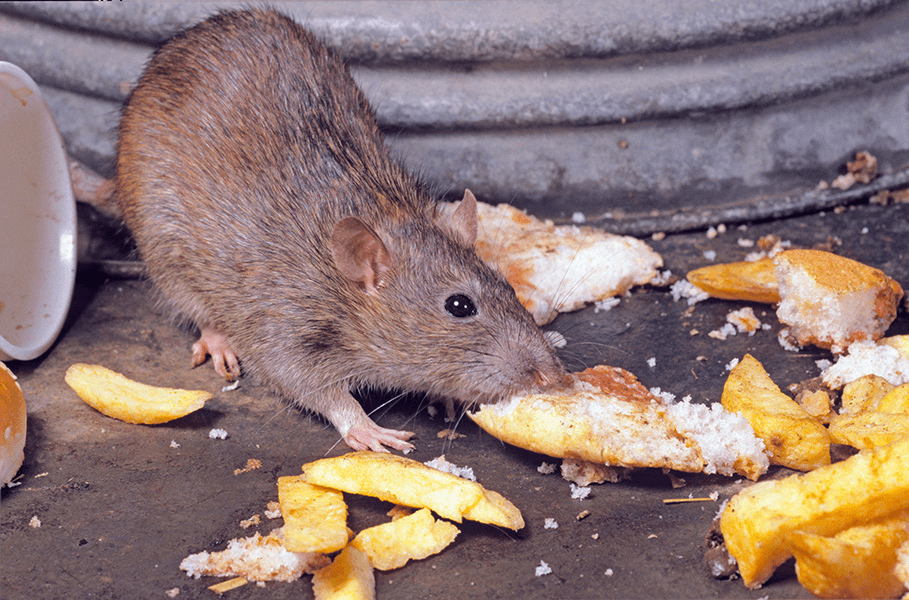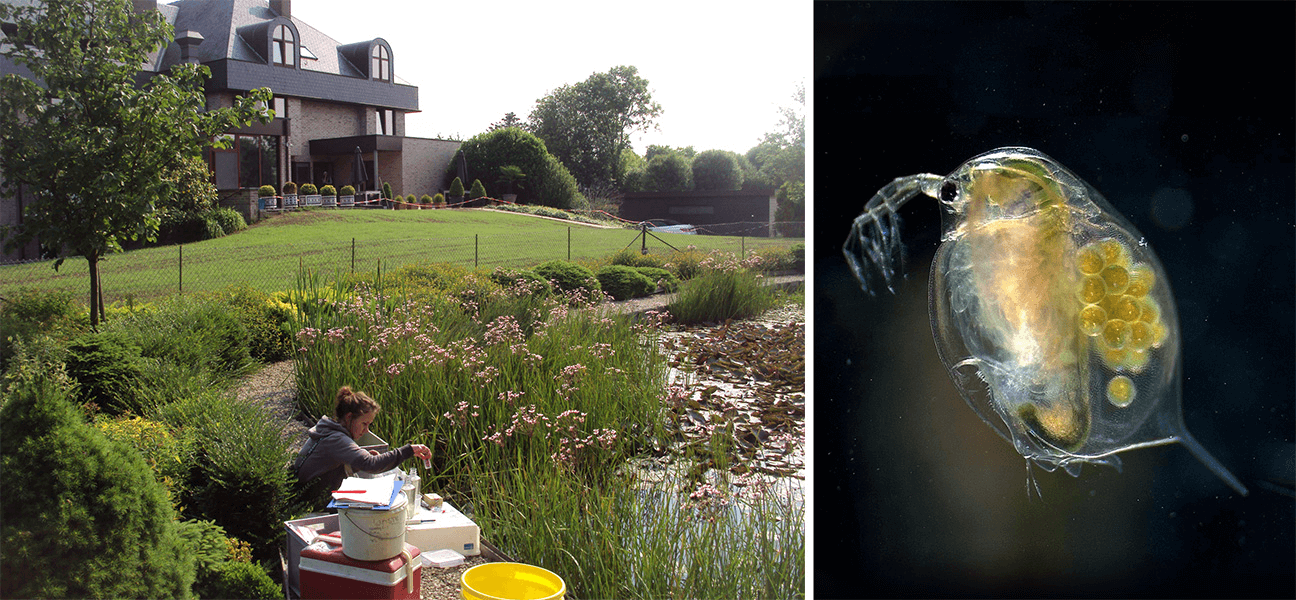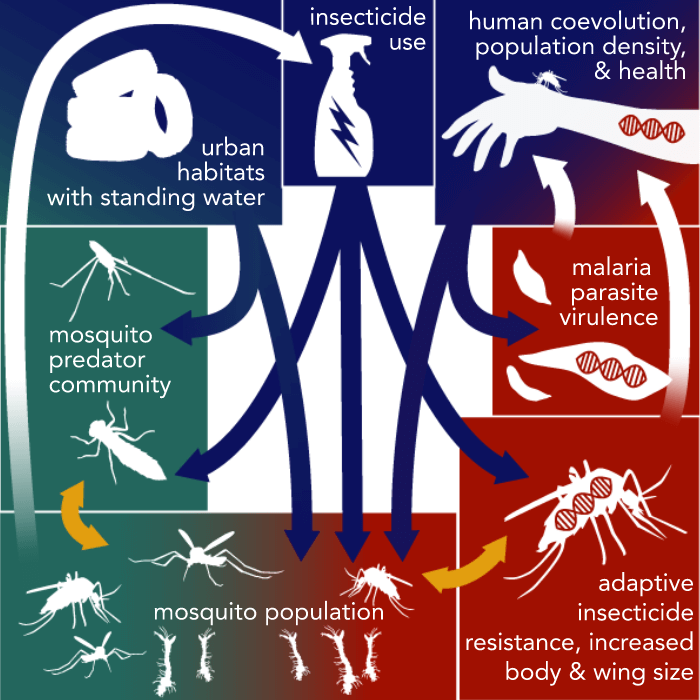 It’s happening in plants: White clover in downtown Toronto is less likely than clover in surrounding rural areas to produce a cyanide that deters herbivores — a trend mirrored in cities in many countries, a new study finds. And it’s going on in birds: Songbirds in Europe and owls in Argentina show evidence of natural selection in genes associated with cognition.
It’s happening in plants: White clover in downtown Toronto is less likely than clover in surrounding rural areas to produce a cyanide that deters herbivores — a trend mirrored in cities in many countries, a new study finds. And it’s going on in birds: Songbirds in Europe and owls in Argentina show evidence of natural selection in genes associated with cognition.
All are examples of urban evolution: genetic changes that may help living things adapt to life in big city environments. “A city changes an environment dramatically. It creates a completely novel ecosystem,” says Marc Johnson, an evolutionary ecologist at the University of Toronto Mississauga.
The city is also the fastest-growing ecosystem on the planet, home to more than half of the world’s people. So perhaps it’s no surprise that studying the evolution of species in urban settings, a field that barely existed at the start of the millennium, now is a focus for many biology labs.
Cities can act as test beds to address longstanding questions in evolution. Do different populations of the same species evolve in similar ways when faced with the same environmental pressures? And do different species in the same locations evolve similar characteristics?
Many environmental factors are similar across thousands of cities, says Johnson: things like higher temperatures, pollution and habitats fragmented by buildings and roads. But cities also differ in age, amount of green space, climate and more.
“You can look at these similarities and these differences and start to ask, how can this drive evolution?” Johnson says.

Observing how creatures respond to urban life also may help to improve conservation management or pest control, and to plan cities with functioning ecosystems that are environmentally more robust and better places for people to live.
And urban evolution may hold hints about our future world. “Cities are kind of the key for understanding responses to global climate change,” says Sarah Diamond, an evolutionary ecologist at Case Western Reserve University in Cleveland, Ohio, and coauthor of an article on urban evolution research in the Annual Review of Ecology, Evolution, and Systematics. “You can step through time. You can say, ‘This city is giving you the global climate warming that we would expect by 2050 or 2070 or 2100.’”
People often feel that city life is removed from nature, says Colin Garroway, an evolutionary ecologist at the University of Manitoba in Winnipeg. “But cities are nature.”
Looking out our back doors
Probably the best-known example of urban evolution is the English peppered moth whose coloration darkened in the 19th century in response to coal pollution. In a famous 1955 paper, British geneticist Bernard Kettlewell presented evidence that this was a case of natural selection in which darkness helped the moths evade bird predation as they rested on sooty tree trunks.
But the field of urban evolutionary ecology remained tiny until recently: “Most evolutionary biologists would not be caught dead in a city,” says Johnson. That began to change with the rapid growth of urban ecology studies in the 1990s and accelerated with discoveries of surprisingly quick cases of evolution, such as Caribbean lizard populations that displayed larger toepad area, crucial for clinging to surfaces, after two major hurricanes in 2017.
It didn’t hurt that professors of evolutionary biology generally are employed in urban universities and curious about what is happening in their backyards. “These dynamics are happening all around you,” says Ryan Martin, an evolutionary ecologist at Case Western Reserve and coauthor with Diamond of the Annual Reviews article. “Go out and look in your garden, and you’ll see a bunch of native pollinators that are all presumably evolving in response to these changes in the city…. You don’t have to do anything special to see these cool dynamics; you walk out your door.”

The water flea Daphnia magna — a freshwater crustacean up to a few millimeters in size — is one species busy evolving in cities in response to heat, pollution and even local predators. These zooplankton can prevent algal blooms that overload ponds with toxic cyanobacteria, so this adaptation may have a big effect on freshwater ecosystems, says Kristien Brans, an evolutionary ecologist at KU Leuven in Belgium, who studies the water fleas.
One basic challenge in such urban investigations is to distinguish between two modes of response to altered environments: evolution (genetic alterations that appear across generations) and phenotypic plasticity (the flexibility to alter physical and/or behavioral characteristics in an organism’s lifetime).
For water fleas, it turns out that both are at play. Fleas raised in lab experiments at temperatures matching urban ponds are smaller, and mature and reproduce more quickly, than fleas reared at rural pond temperatures that tend to be several degrees cooler. (That’s phenotypic plasticity — no genetic changes have occurred.) But over time, urban water fleas living generation after generation in warmer, urban pond waters have genetically changed to have those same kinds of alterations. (That’s evolution.)
In a 2017 paper, for example, Brans and her coworkers took populations of water fleas from a range of habitats — some more rural and some more urban — and reared them for many generations before testing their ability to survive in urban-temperature water and rural-temperature water. Fleas collected from urban ponds displayed higher heat tolerance in the warm ponds than those collected from rural ponds, along with smaller body size and other changes.
A follow-up study published in 2018 showed that urban Daphnia have significantly higher concentrations than rural water fleas of total body fat, proteins and sugars, trait changes that are associated with handling stresses such as heat as well as with faster life cycles.

Brans and coworkers have also recently found that urban water fleas are more likely than their rural cousins to survive exposure to a common pesticide, and that populations of Daphnia display different genetic adaptions to pesticides depending on whether they grow in ponds surrounded by conventional farms, organic farms or nature reserves. In lab tests, water fleas taken from ponds surrounded by conventional farmland displayed higher resistance to a pesticide called chlorpyrifos that’s routinely employed in such farming. Fleas near organic farms were more resistant to two pesticides allowed in organic agriculture.
Looking up the food chain, Brans and colleagues have evidence that urban water fleas and predatory insects that eat them — damselflies — are evolving in step with each other. Urban damselfly larvae are far better than rural damselfly larvae at encountering and gobbling up rural water fleas, for example. But they have a tougher time preying on the urban fleas. In other words, when rural or city damselfly and flea populations are matched, there seems to be more balance — as you’d expect if two populations are evolving in step with each other.
Brans also is studying how the microbes that live in Daphnia guts differ between city and countryside. These microbial communities — or microbiome — shape what the water fleas can eat, and some flea genotypes encourage microbiomes that enable fleas to digest toxic cyanobacteria that can overrun ponds.
Adapting successfully, or maybe not
Acorn ants offer another case of adaptive urban evolution. With colonies so tiny they can live inside a single acorn, they are easy to study. (“Put them in a little plastic cup with some sugar water and a little dead mealworm and they’re totally happy,” Martin says.) Colonies in Cleveland, Ohio — whose downtown temperatures average about 4 degrees Celsius warmer year-round than the rural surroundings — have higher heat tolerances but lower cold tolerances than rural ants, Martin and Diamond found. “We’re pretty confident that it’s due to underlying genetic differences,” Martin says.
Brown rats in Manhattan offer yet another case of urban evolution, though it may not impart advantages to the unloved creatures. Jason Munshi-South, an evolutionary ecologist at Fordham University in New York, and colleagues analyzed the genomes of 262 rats and found that the animals have evolved distinct genomic profiles in different neighborhoods. The scientists believe it’s because the rat populations don’t move freely between these spots, and slowly, over time, accrue differences.
What’s keeping them apart? Midtown Manhattan may act as a kind of soft barrier between Lower and Upper Manhattan, the scientists say, because it is less residential (providing less food) and the site of intense rat control efforts. Roads and waterways also can genetically split up rat populations, according to studies in New Orleans, Salvador in Brazil and Vancouver in Canada, where rats also show genetic variations by neighborhoods.
Such insights may prove useful in designing measures to suppress rat populations. “If you understand how rats move around and what facilitates or prevents their movement, you can break the city down into more manageable units for rodent control,” Munshi-South says.
Other changes in rats may be adaptive. Munshi-South’s lab has evidence that natural selection is changing the skulls of the rats such that they have longer noses and shorter sets of teeth. These might be adaptations to colder environments and a diet of human leftovers respectively, the scientists speculate. Similar changes in teeth have been spotted in urban white-footed mice, so this might be a general phenomenon in rodents in cities, Munshi-South says.
In the clover
Urban plants are on the genetic move too — such as white clover, a perennial plant that thrives in human landscapes. The plant, due to the activity of two known genes, can produce hydrogen cyanide, if it invests the resources to do so. This protects it from browsing herbivores.
Sampling the plants from the center of Toronto out to surrounding rural areas, Johnson’s lab discovered a striking inherited correlation: The closer to the center, the less cyanide gets produced. Johnson and his colleagues suggest this happens because the center is colder in winter, due to less snow cover, and plants that make hydrogen cyanide are more susceptible to freezing. (His lab found generally similar results in several dozen other North American cities.)
To delve more deeply into urban evolution, a few years back Johnson and colleagues launched the Global Urban Evolution Project (GLUE), bringing together 287 scientists in 26 countries. (Many responded to tweets Johnson sent out while pursuing another project in the Galapagos.) “GLUE is the largest collaborative study in evolutionary biology ever attempted, if you don’t include the human genome project,” Johnson says.
GLUE took white clover’s cyanide production as a model to study three questions. Do instances of urbanization in different cities lead to similar local environments? Do those similar environments lead the clover to evolve along the same lines — display parallel evolution — in a trait of interest (in this case, cyanide production)? And if so, what environmental factors are driving the pattern?
In a new Science paper, the collaborators showed that urban environments do indeed end up quite similar to each other, with less vegetation, more impervious surfaces and higher summer temperatures than their outlying rural areas. (In fact, downtowns of cities such as Beijing and Boston are more similar to each other in such factors than they are to their rural areas, Johnson comments.) Analyzing more than 110,000 clover plants from 160 cities in 26 countries, the GLUE investigators also demonstrated a strong link between urbanization and clover cyanide production. And after sequencing more than 2,000 clover genomes and analyzing the urban-rural differences, the researchers showed that natural selection truly is at work.
But what are the environmental factors driving this change in cyanide? “The answer is pretty complicated,” Johnson says, and may not be the same for all cities. The most important ones the team uncovered were changes in overall vegetation (probably related to the abundance and diversity of herbivores that eat clover) and the aridity of the environment. “We don’t see temperature clearly popping out, which is what we had identified when we looked at Boston, Toronto, Montreal and New York,” he says.
The first GLUE results show that white clover is a powerful global model for understanding evolution and ecology in response to urbanization, he adds.
Disparities within cities
As researchers continue to study evolution in the big city, some are focusing on the effects of social and economic inequality. The question, says Simone Des Roches, an evolutionary ecologist at the University of Seattle in Washington, is whether plants and animals evolve differently in low- versus high-income neighborhoods. Lead author on a 2020 paper on the interaction of social, ecological and evolutionary dynamics in cities, Des Roches notes that racial discrimination in the United States has produced strikingly different urban environments.

Impoverished neighborhoods tend to have higher temperatures, greater exposure to pollutants and other environmental disadvantages. These can act as playgrounds for disease-carrying pests such as mosquitoes and rats that enjoy human company: Invasive tiger mosquitoes grow larger in neighborhoods with abandoned buildings in Baltimore, for example. Researchers want to know if, and how, organisms may evolve differently in these disadvantaged environments.
Urban evolution studies also can shed light on what lies ahead in this time of the Anthropocene and suggest steps that might achieve a friendlier world for humans and other forms of life. For example, in many cities, Diamond says, scientists can date the onset of high levels of warming from industrialization. Researchers then can measure how much a species’ heat and cold tolerances have changed over time, infer the rate of evolution of those traits and apply those inferences to predict how life forms will respond to future climate change.
Diamond’s work in acorn ants suggests that rural populations may be able to evolve to take the greater heat. But, she says, urban acorn ants appear less well-adapted to cities than the rural ants are adapted to their ancestral homes.
Brans, meanwhile, looks to apply her research to preserve urban biodiversity and public health — since urban conservation managers will want to see ponds growing healthy populations of water fleas that bolster those ecosystems against toxic algae blooms.
Unfortunately, the genetic biodiversity that can fuel adaptation often dwindles in urban areas. A genetic survey by Chloé Schmidt working in Garroway’s lab, for example, found this to be the case, along with lower population sizes, for North American mammals living in more disturbed environments. That’s a concern during a period when so many populations of animals and plants are seeing their natural habitats degraded or simply destroyed.
Scientists don’t take urban environments as precise models for the impacts of climate change. But they say such studies will provide important clues to how creatures may respond to dwindling access to water and food, and exposure to pollution, heat, drought and other dangers.
“We’re in the Anthropocene, and we don’t understand how we’re changing the environment on every level, from greenhouse gas emissions to changing the evolution of life around us,” Johnson says. “People realize this research is part of the solution.”
Eric Bender is a science writer based in Newton, Massachusetts, and a BioTwitter addict. Follow Eric on Twitter @ebender00
A version of this article appeared originally at Knowable Magazine and is published here with permission. Sign up for the Knowable Newsletter here. Check out Knowable on Twitter @KnowableMag































